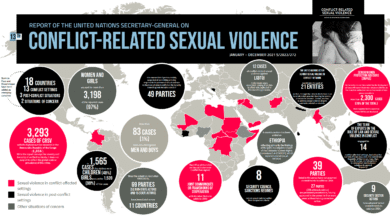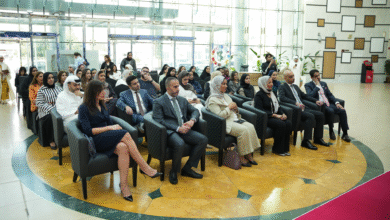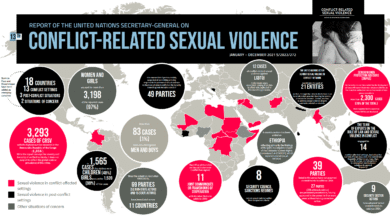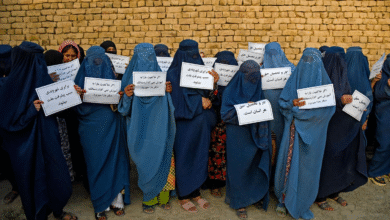World AIDS Day: Take The Rights Path To End AIDS
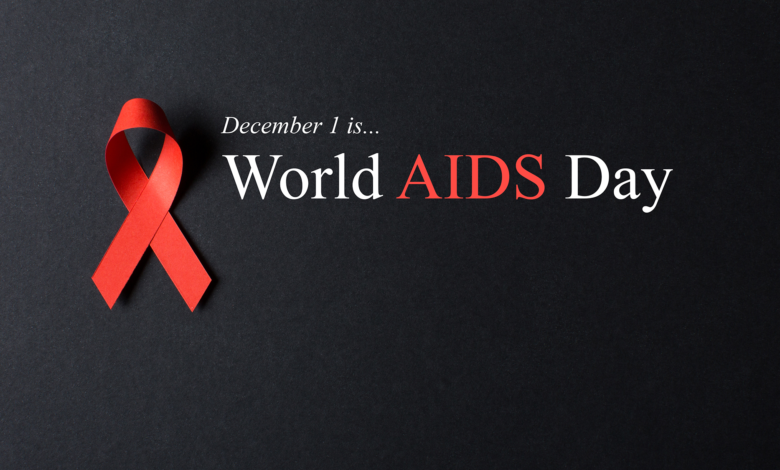
World AIDS Day, observed every December 1st, serves as a powerful reminder of the ongoing battle against HIV/AIDS globally and the crucial need for action to end this epidemic by 2030. The United Nations emphasizes the importance of a rights-based approach to HIV prevention, urging leaders to dismantle the barriers that prevent vulnerable populations from accessing necessary treatment. In a world where someone is infected with HIV every 25 seconds, it is imperative to address global health challenges that perpetuate stigma and discrimination. UNAIDS calls on nations to unite in this effort, highlighting that effective HIV prevention strategies are essential to achieving equitable healthcare for all. As we honor the lives lost and the progress made, World AIDS Day is not just a day of remembrance; it is a rallying cry to take action and secure the rights of everyone affected by this pandemic.
The observance of World AIDS Day shines a spotlight on the collective efforts to combat the HIV crisis, emphasizing the timeline set for eradicating this public health issue by 2030. This global initiative encourages support for those living with HIV and promotes the need for comprehensive treatment access. Using a human rights lens, we advocate for dismantling discriminatory practices that hinder effective HIV prevention and care. With the call to action echoing the principles outlined by UNAIDS, collaboration amongst governments, organizations, and communities becomes vital in responding to this health dilemma. As we move forward, recognizing the interconnectedness of health rights and effective responses is paramount to meeting the goal of ending the AIDS epidemic.
The Importance of World AIDS Day in 2024
World AIDS Day, held annually on December 1st, serves as a pivotal moment to reflect on the enduring global challenges posed by the HIV/AIDS epidemic. In 2024, as we observe this significant day, the UN Secretary-General António Guterres emphasizes the need for a collective commitment from global leaders to eradicate AIDS as a public health threat by the year 2030. The day not only commemorates those who have been lost to the disease but also aims to inspire renewed efforts toward achieving equitable healthcare for all, particularly the most marginalized populations.
On World AIDS Day, organizations like UNAIDS renew their calls for action, urging governments to adopt a rights-based approach in the fight against HIV/AIDS. Such an approach acknowledges that public health is inseparable from human rights, stressing that to genuinely combat this epidemic, all individuals must have access to necessary services without discrimination. Observing this day highlights these principles in escalating awareness around issues that hinder progress, such as legal barriers and societal stigma.
Global Health Challenges in the Fight Against AIDS
As we work towards ending AIDS by 2030, we face significant global health challenges that threaten to stall progress. The UNAIDS report reveals that inequalities in healthcare access are a major barrier, particularly affecting women, girls, and LGBTQ+ communities. With data showing that nearly one in four people living with HIV do not have access to life-saving treatment, it becomes clear that addressing these disparities is essential alongside HIV prevention strategies. By breaking down these barriers and fostering inclusive health systems, we can empower the most vulnerable populations.
Moreover, widespread stigma and discrimination remain pervasive, often preventing at-risk individuals from seeking testing and treatment. In 2023 alone, 1.3 million new HIV infections surfaced globally, significantly exceeding the established target for that year. These statistics underscore the urgent need for leaders to act and implement policies that respect and protect human rights. A concerted effort in addressing global inequities and promoting a rights-based approach will be instrumental in tackling the epidemic and ensuring that everyone can access preventive and therapeutic services.
The Role of UNAIDS in Ending AIDS by 2030
UNAIDS, the United Nations Joint Programme on HIV/AIDS, plays a vital role in guiding global efforts to combat HIV/AIDS. By providing evidence-based strategies and advocating for human rights protection, UNAIDS emphasizes the elimination of barriers to healthcare. The organization’s focus on a rights-based approach highlights the need to safeguard the health and well-being of all individuals, regardless of their backgrounds. This imperative underlies their call for governments to remove discriminatory laws and practices that impede access to essential services, thus promoting a more inclusive landscape for HIV care.
Furthermore, UNAIDS advocates for a comprehensive response that intersects with global health challenges, including gender-based violence and inequitable educational opportunities. As highlighted in their reports, these issues disproportionately affect women and girls, making them particularly vulnerable to HIV infection. Initiatives like ensuring that education on HIV prevention reaches at-risk groups, particularly among youth, are crucial. By addressing these intersecting issues, UNAIDS aims to foster a world where everyone, particularly the most marginalized, can achieve optimal health outcomes.
Rights-Based Approach: A Key to HIV Prevention
Adopting a rights-based approach to HIV prevention and treatment is fundamentally crucial in effectively reducing new infections and improving health outcomes. This strategy not only aims to provide universal access to services but also dismantles the systemic injustices that hinder individuals, particularly women, girls, and marginalized populations, from receiving the care they need. By prioritizing the rights of all individuals, healthcare systems can become more inclusive and effective in their outreach efforts.
In practice, this approach recognizes that when people feel safe and respected, they are more likely to seek the necessary health services. This is especially critical as evidenced by the findings that highlight significant barriers persistently facing marginalized groups. When leaders commit to enhancing human rights, they catalyze positive change that improves access to HIV testing, treatment, and prevention. Hence, a focus on human rights is not merely an ethical obligation; it is a practical imperative in the global fight against AIDS.
Challenges Faced by Women and Girls in HIV Response
Women and girls continue to be disproportionately affected by the HIV epidemic, particularly in sub-Saharan Africa, where they account for 62 percent of new infections. The systemic issues leading to this disparity, including gender-based violence and limited access to education, amplify their vulnerabilities. Addressing these challenges requires a multi-faceted approach that not only focuses on healthcare access but also on broader societal reforms that empower women and promote gender equality.
Additionally, the prevalence of HIV among young women highlights the urgent need for targeted interventions aimed at this demographic. With alarming statistics revealing that nine out of ten new infections among adolescents occur in girls, there is a clear call for focused educational campaigns that empower young women with knowledge about HIV prevention and treatment. By investing in the rights and resources needed for women and girls, we foster a more equitable response to the HIV/AIDS epidemic, thereby moving closer to achieving the goal of ending AIDS by 2030.
Innovative Solutions for HIV Treatment Access
To effectively combat the HIV epidemic, innovative solutions that enhance access to treatment are imperative. This includes the expansion of antiretroviral therapy (ART) to those who urgently need it, especially among children and adolescents who are currently underserved. Statistics indicate that while 77 percent of adults living with HIV are receiving ART, only 57 percent of children aged 0 to 14 are accessing similar treatments. This stark contrast must be addressed to ensure that all age groups benefit equally from advancements in HIV care.
Expanding innovative testing technologies and treatment modalities will be critical to achieving wider coverage. Strategies may involve community-based programs that reach vulnerable populations where they’re located and improve education about available services. By prioritizing innovations that streamline service delivery, we can ensure that no one, regardless of age or demographic, is left behind in the fight against HIV/AIDS.
Ending Stigma in the Fight Against HIV/AIDS
Stigma remains one of the most significant barriers in the fight against HIV/AIDS, deterring many individuals from seeking testing, treatment, and support. Discriminatory attitudes, often fueled by outdated beliefs and misinformation, contribute to a culture of fear and shame surrounding the disease. Addressing stigma must be a priority in public health campaigns, focusing on education and awareness to foster a more compassionate and informed society that supports those affected by HIV.
Community-led initiatives that share personal stories and drive public engagement can be effective in dismantling stigma. By promoting narratives that highlight the realities of living with HIV, broader societal understanding can shift towards empathy and support. In overcoming stigma, we create a more conducive environment for individuals to seek the healthcare they need, ultimately driving down new infection rates and improving overall health outcomes.
Global Partnerships for Effective HIV Responses
Collaboration between governments, NGOs, and civil society is crucial for a robust response to the HIV epidemic. Global partnerships can leverage resources and expertise to design and implement effective strategies that address both prevention and treatment. The interconnected nature of health challenges necessitates a unified approach, where knowledge-sharing and coordinated efforts can lead to more effective outcomes.
Moreover, engaging community organizations ensures that interventions are locally informed and tailored to the specific needs of populations. By aligning resources and efforts across different entities, we enhance the visibility of the HIV/AIDS response, driving impact and ensuring that vulnerable groups are prioritized. Building these partnerships strengthens our capacity to confront HIV/AIDS in comprehensive, sustainable ways.
Frequently Asked Questions
What is the significance of World AIDS Day?
World AIDS Day, observed annually on December 1, serves as a reminder of the ongoing global battle against HIV/AIDS. It honors the lives lost and celebrates progress made towards ending AIDS by 2030. The day raises awareness of the importance of comprehensive HIV prevention efforts and a rights-based approach to ensure access to treatment for all.
How can the global community work to end AIDS by 2030?
To end AIDS by 2030, the global community must adopt a rights-based approach to HIV prevention and treatment. This involves dismantling barriers to healthcare, advocating for human rights, and ensuring that vulnerable populations, especially women and girls, have equal access to lifesaving services. Organizations like UNAIDS emphasize that addressing systemic challenges is crucial for effective HIV response.
What role does UNAIDS play on World AIDS Day?
UNAIDS plays a pivotal role on World AIDS Day by advocating for global commitment to end AIDS as a public health threat by 2030. It calls for a rights-based approach, removing barriers to access, and protecting marginalized communities from discrimination. UNAIDS also highlights the need for intensified efforts to prevent new infections and ensure equitable treatment access.
Why is a rights-based approach essential in HIV prevention?
A rights-based approach is essential in HIV prevention as it ensures that everyone, especially marginalized and vulnerable groups, can access healthcare services without fear of discrimination. This approach addresses harmful laws and practices that perpetuate stigma, allowing for more effective public health campaigns and ultimately contributing to the global goal of ending AIDS by 2030.
What progress has been made toward ending AIDS as a global health challenge?
Progress toward ending AIDS as a global health challenge includes increased access to antiretroviral therapy and awareness campaigns, yet significant gaps remain. In 2023, there were 1.3 million new infections globally, indicating the need for enhanced efforts and a rights-based approach to fully address the epidemic and meet the target set for 2025.
How does gender inequality affect HIV infection rates on World AIDS Day?
Gender inequality significantly affects HIV infection rates, as evidenced by the statistics presented on World AIDS Day. In sub-Saharan Africa, women and girls accounted for 62% of new infections. Systemic barriers, including gender-based violence and limited educational opportunities, increase their vulnerability to HIV. Addressing these inequalities is vital for effective prevention and treatment strategies.
What message does World AIDS Day convey about HIV awareness and treatment access?
World AIDS Day conveys a powerful message about the importance of awareness, education, and access to treatment for HIV. It emphasizes the need for a collective effort to uphold human rights and dismantle barriers preventing vulnerable populations from receiving the care they need. By fostering understanding and support, the global community can work towards achieving the goal of ending AIDS by 2030.
| Key Points |
|---|
| World AIDS Day is observed on December 1 annually, highlighting the global fight against AIDS. |
| UN Secretary-General António Guterres emphasized the need for global leaders to adopt a rights-based approach to end AIDS by 2030. |
| Over 9 million people living with HIV lack access to lifesaving treatment. |
| The importance of removing systemic barriers and discriminatory practices was highlighted to protect the rights of women, girls, and minorities. |
| In 2023, there were 1.3 million new HIV infections, far exceeding the target of 370,000. |
| Women and girls accounted for 62% of new infections in sub-Saharan Africa, highlighting gender inequalities. |
| Access to treatment is disproportionately lower for children and adolescents compared to adults. |
| UNAIDS calls on leaders to take the ‘rights path’ for effective HIV treatment and prevention. |
Summary
World AIDS Day serves as a crucial reminder of the ongoing battle against HIV/AIDS, urging leaders to commit to a rights-based approach for effective prevention and treatment. By ensuring that everyone has access to healthcare without discrimination, we can strive to end AIDS as a public health threat by 2030. The involvement of global leaders and communities is vital to remove barriers and uphold human rights, ensuring that all individuals, particularly the most vulnerable populations, receive the care and support they need. Only through collective action and commitment to these principles can we hope to make real progress in this fight.

